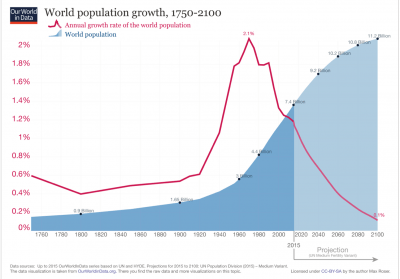Growth and decay refer to the direction in which a quantity is changing. If something is growing, it means that a value is increasing (example–world population growth over time). If something is decaying, it means that a value is decreasing (example–population of Japan is decaying over time). A growth or decay factor describes the rate at which a quantity is changing over a certain period of time via a multiplication sequence (factor implies multiplication). For example, to describe a population increase by 10%, multiply by the growth factor 1.10. To describe a population decrease by 10%, multiply by 0.90 (shows a 10% decrease because only 90% of the theoretical population is remaining. A total change is the amount by which a quantity increases or decreases–for example, the total population change for Japan from 2010 to 2016 was a population decrease by 1.13 million (128.06 million in 2010 –> 126.93 million in 2016). The percent change for this population from 2010-2016 would be a 0.88% decrease in population. The average rate of change would be decreasing by .18 million people per year (this means the population is decreasing by less than a quarter of a million people per year). The terms linear growth would refer to a steady decrease per year, resulting in a linear graph while exponential growth or decay means that a quantity is increasing more and more rapidly or decreasing more and more rapidly over time.
See the data for Japan population decay here.


